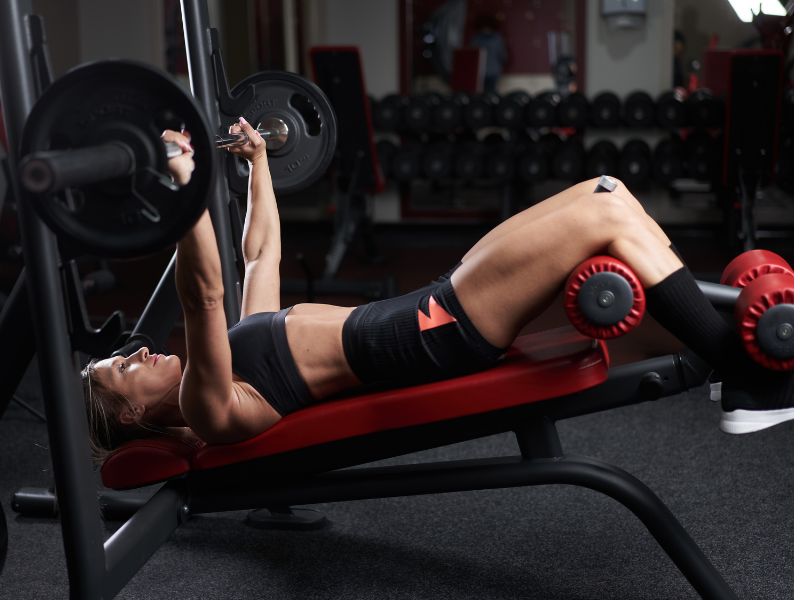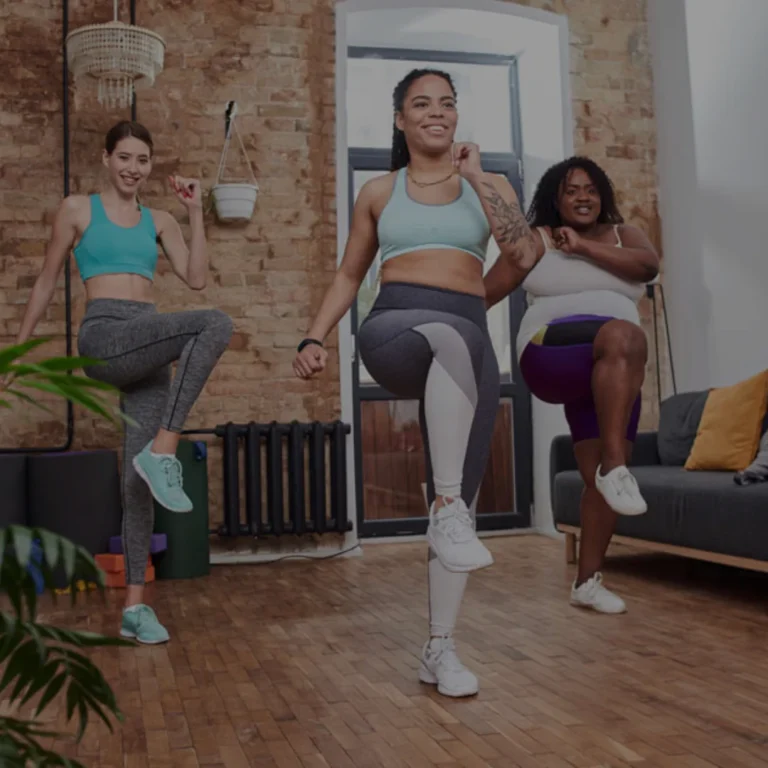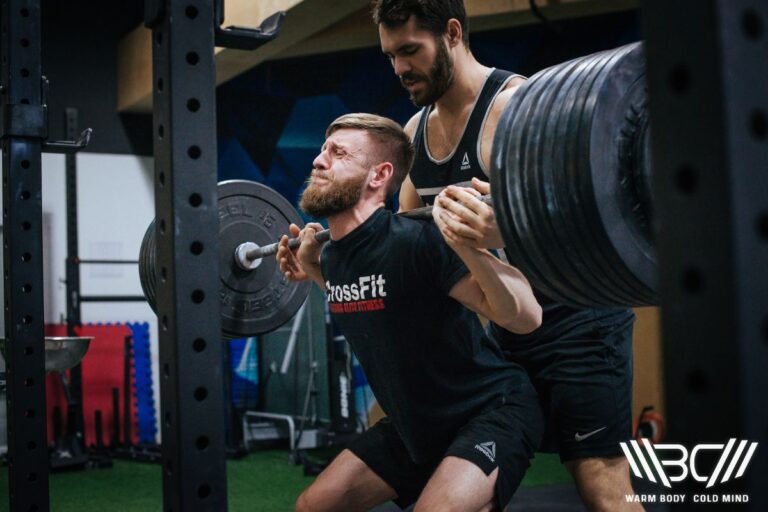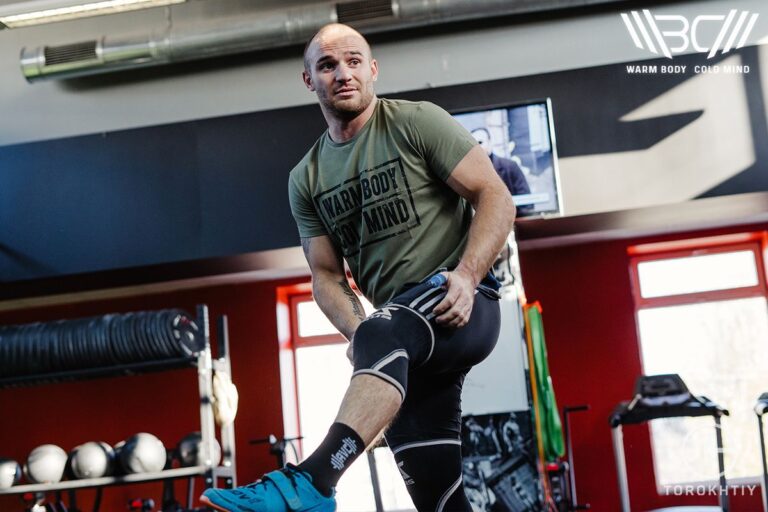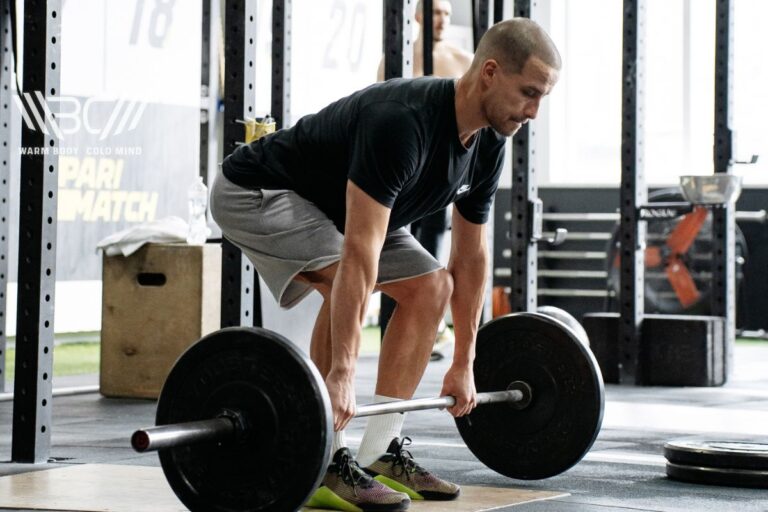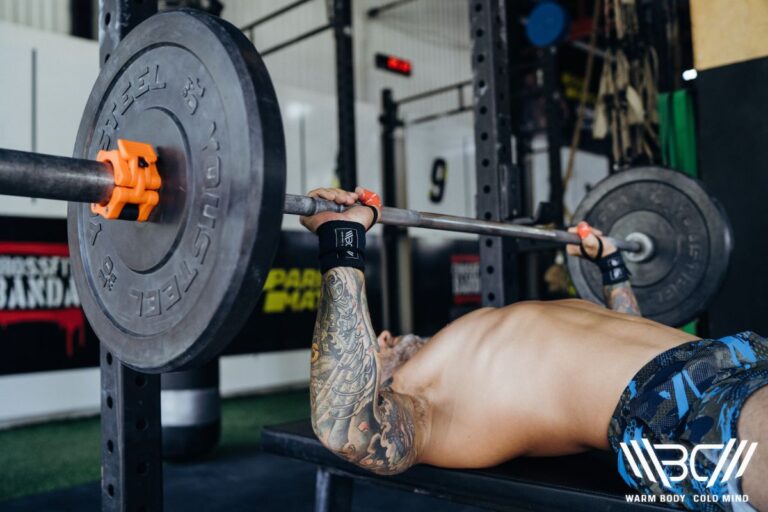Is Decline Bench Easier? The Debate Answered
Reviewed by Jacek Szymanowski
Many gym goers wonder is decline bench easier than a flat or incline bench press. Most lifters tend to predominantly include incline and flat bench in their routine, so decline bench is often pushed aside for more popular options. Incorporating all variations of the bench press can, however, be beneficial for activating various parts of the chest.
So. let’s get into the answer!
Is decline bench easier is a common question, and the short answer is yes, it’s the easier exercise compared to other bench variations. This is because there’s increased lower pectoral and tricep activation, minimal shoulder stress, less ROM, and increased core engagement when performing decline bench.
The variety of benching variations can be complicated to navigate, especially as decline bench is less commonly seen in gyms. There are a range of pros and cons for incorporating decline into your routine, but it’s best to first understand the movement before giving it a go.
What Is A Decline Bench Press?
Decline bench press varies from flat benching due to the different angle of the bench. For decline bench press, the bench is typically positioned at an angle of 15°- 30°, so when you lay back, your head is lower than your torso. The increased angle compared to a flat bench press works the chest by activating more of the sternal portion of the pectoralis major compared to its flat-bench alternative.
Muscles Involved in Decline Bench Press
- Pectoralis major (with main activation in the sternal head)
- Pectoralis minor
- Triceps Brachii
- Anterior deltoid (although with less activation than flat or incline bench)
- Latissimus Dorsi
- Serratus Anterior
- Abdominals
Bench press is an exercise included in most lifters’ training programs, as it’s a key movement in building a strong chest, but decline bench vs flat bench continues to be a big discussion! As a compound exercise, the bench press recruits various muscle groups, making it a worthwhile exercise for upper-body hypertrophy.
The key effects of including decline bench in your push sessions are balanced chest development (provided you don’t overtrain one specific type of bench press), potential heavier lifts, and reduced activation of the shoulders.
2 Benefits of Decline Bench Press
It’s normal to wonder ‘what is decline bench good for?’, especially when flat and incline are more commonly seen in gyms. There are a few reasons why you may want to add decline into your routine, and your lower pecs will thank you!
✅ Potential To Lift Heavier
Many lifters find they can lift heavier with decline bench compared to flat or incline. The two main reasons for this is because the angle of the bench brings the body into a position where the head is lower than the torso and reduced range of motion compared to a flat bench.
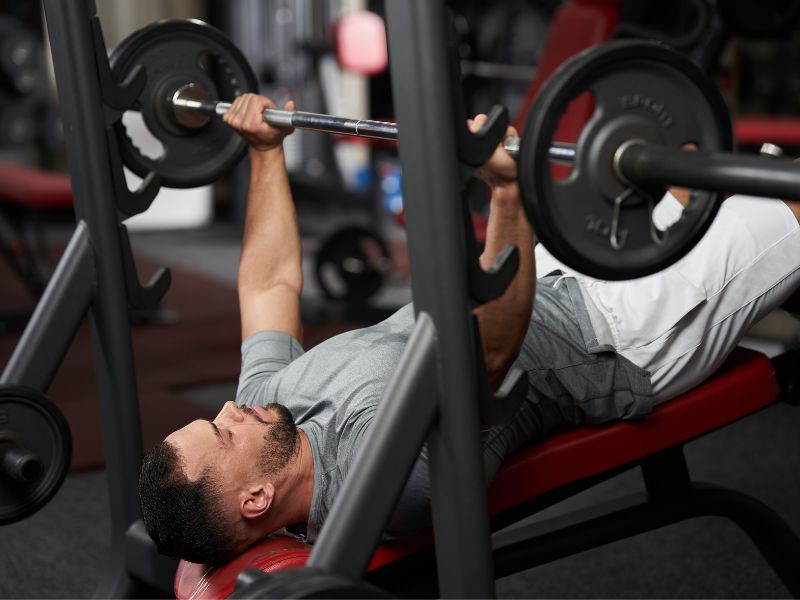
This results in increased activation of the lower pecs, and less stress placed on the shoulders, which is often the case with flat and incline bench press. Studies have shown inclinations above 30° have greater activation of the anterior deltoid, which is a significant indication of why lifters can push more weight in decline, where the chest has more involvement than the shoulders.
✅ Better Lower Pectoral Activation
Including all variations of bench press in your training is the ideal way to build a balanced chest. As incline bench have more shoulder activation than decline, it’s difficult to activate the lower pectorals. The main emphasis is placed on the lower portion of the chest in decline bench, meaning the exercise can help ensure you build all areas of your chest, not just the upper portion.
Subscribe!
Get useful tips, expert insights, and in-depth analysis of training programs & nutrition plans to get the most out of your performance.
2 Disadvantages of Decline Bench Press
Every exercise has supporters who both love and loathe it, and decline bench is no exception. Along with an uncomfortable position if you haven’t done decline bench before, there are a few disadvantages worth considering.
❌ Performing Decline Bench Too Much Can Lead To Flat Bench Imbalances
We’ve already discussed how the lower pecs get a substantial amount of activation from a decline bench, and although this is great for building the lower portion of the chest, it can lead to some issues. Overtraining any muscle can lead to problems and this is the same for performing the decline bench.
To avoid overtraining the lower pecs, it’s essential to follow a balanced program and get enough rest and recovery between training sessions. Studies have shown long periods of imbalance during training can lead to declined performance and even overtraining syndrome in the long run.
Working out too often with reduced ROM can lead to imbalances over time with other variations such as flat bench. This follows the SAID principle where we only get better at what we train.
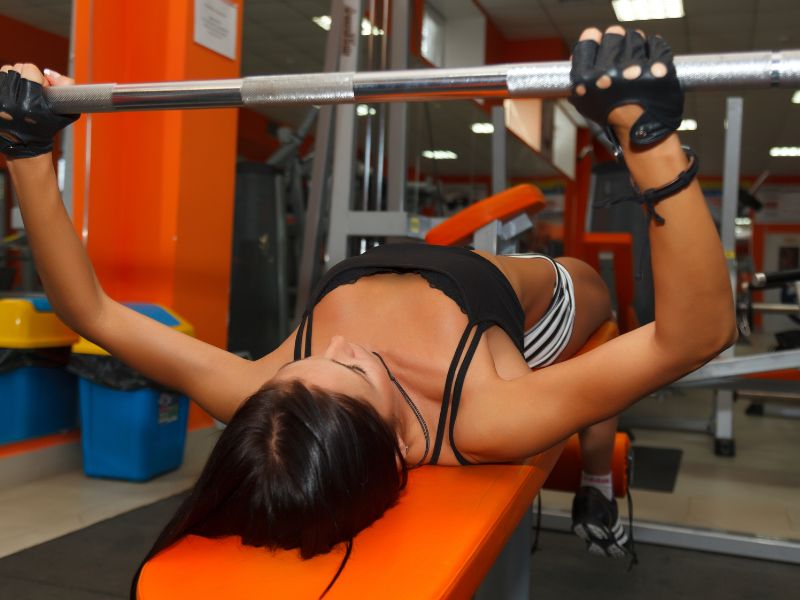
❌ Can Be Risky Without Using A Spotter
Due to the angle of the bench when performing a decline press, it’s common to wonder is decline bench harder when looking at decline bench vs flat bench or incline bench. Although it’s an easier exercise to perform, mainly due to the lowered stress on the shoulders, reduced range of motion and increased lower chest engagement, it can be risky to complete the exercise without using a spotter.
The increased angle of the bench puts the bar above the neck which can be dangerous when failing a lift. The bar has a higher risk of landing on the neck or head compared to landing on the chest with a failed flat bench press.

Pro Tip:
Is Decline Bench Press Easier? 5 Reasons Why It Is!
Decline benching is easier than flat or incline benching for several reasons, and after exploring a few of them, you’ll no doubt want to incorporate this exercise into your training plan! All you need is a bench and confidence to try out a new exercise if decline isn’t something you’ve attempted before.
1. Increased Lower Pectoral Activation
The increased lower pectoral activation of a decline bench press helps make the movement easier as the chest is more involved than the shoulders. The chest muscles are larger than the shoulder muscles, and the latter has more activation with flat and incline bench press.
As decline works more of the pecs, it’s possible to lift heavier as the chest is a far larger muscle group than the shoulders, comprising the pectoralis major, pectoralis minor, serratus anterior, and subclavius. Lifting heavier also depends on other factors such as the muscle’s specific function, biomechanics, fast-twitch and slow-twitch muscle fibers, and the efficiency of neural pathways connecting to the muscles.
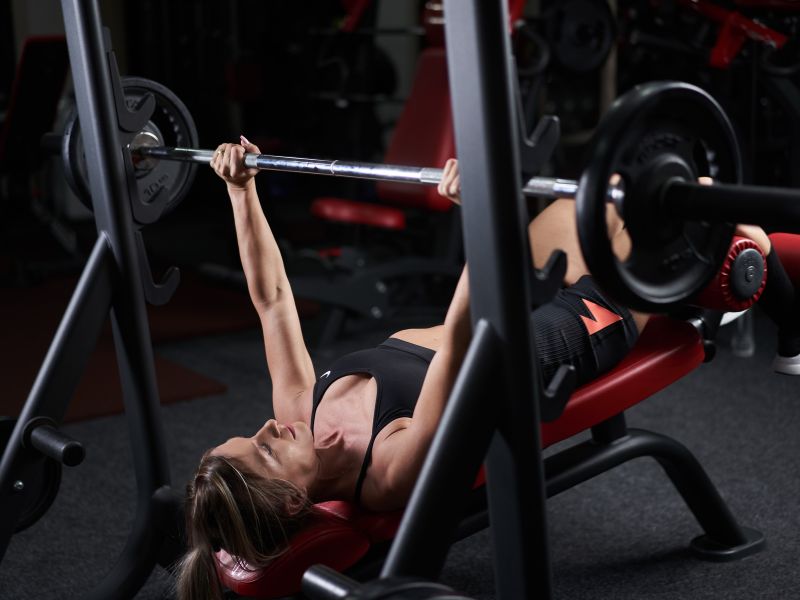
2. Less Stress On Shoulders
Although more studies need to be completed on the topic, a study looking at the prevalence of shoulder injuries in Olympic Weightlifting, found shoulder injuries to be very common type of injury. Decline bench press targets the lower chest more than the shoulders, potentially leading to a lower risk of shoulder injury, and overall less stress on the shoulders.
This makes the decline bench press easier than other variations, as a larger muscle group (the chest) is targeted, leading to less stress and strain on the shoulders and the potential to lift heavier without being limited by the capabilities of the shoulder.
3. Increased Tricep Activation
Along with increased lower pectoral engagement, the long head of the triceps brachii is also activated more in a decline bench press when compared to incline benching. The ability to rely on the triceps and the chest to power through a set of decline bench press can make the movement feel easier with the triceps providing both stability and strength.
Is decline bench press good for tricep growth? Although decline bench utilizes the triceps, movements such as dips, extensions, and kickbacks are generally better for focusing on building the triceps.
4. Less Range of Motion
The range of motion with decline benching is lower than flat or incline bench press due to the nature of the lift, as the bar doesn’t have as far to travel. In some respects, this can hinder chest development, but when performed in a training plan alongside flat and incline benching, this shouldn’t be much of an issue.
The shorter ROM with decline bench is a key reason it’s easier to perform than other bench variations, as the heavy bar has less distance to travel. It’s wise to use all types of bench press for maximum chest hypertrophy and to ensure you’re building a balanced chest without any muscular imbalances.
To support your wrists during various forms of benching, we recommend WBCM wrist wraps. They provide excellent wrist support and they make it easier for you to maintain proper form, which will reduce the risk of injury during lifting.

Secure your performance with our Velcro wrist wraps – the perfect blend of support and flexibility.
Conclusion
The question ‘is decline bench easier’ will continue to be discussed in the gym, with decline bench vs flat bench being a debate that will likely last a lifetime. By highlighting the benefits and drawbacks of decline bench press, alongside the reasons it’s easier to perform, we hope you can feel confident about incorporating this exercise into your routine; just be sure to use a spotter!
Do you include decline bench press in your training sessions? Let us know any results you’ve seen in the comments!
Refernces:
- Abraham López-Vivancos, Noelia Gońzález-Gálvez, Francisco Javier Orquín-Castrillón, Rodrigo Gomes de Souza Vale, and Pablo Jorge Marcos-Pardo, “Electromyographic Activity of the Pectoralis Major Muscle during Traditional Bench Press and Other Variants of Pectoral Exercises: A Systematic Review and Meta-Analysis”, Applied Sciences Volume 13 Issue 8, https://www.mdpi.com/2076-3417/13/8/5203 (Accessed April 10 2024).
- David Rodríguez-Ridao, José A. Antequera-Vique, Isabel Martín-Fuentes, José M. Muyor, “Effect of Five Bench Inclinations on the Electromyographic Activity of the Pectoralis Major, Anterior Deltoid, and Triceps Brachii during the Bench Press Exercise”, National Center For Biotechnology Information, https://www.ncbi.nlm.nih.gov/pmc/articles/PMC7579505/ (Accessed April 10 2024).
- Arthur J. Cheng, Baptiste Jude, Johanna T. Lanner, “Intramuscular mechanisms of overtraining”, Exercise Redox Biology From Health To Performance, Science Direct, https://www.sciencedirect.com/science/article/pii/S2213231720300835 (Accessed April 10 2024).
- Mirza A. Baig, Bruno Bordoni, “Anatomy, Shoulder and Upper Limb, Pectoral Muscles”, National Center For Biotechnology Information, https://www.ncbi.nlm.nih.gov/books/NBK545241/ (Accessed April 10 2024).
- Dr. Brian Serrano, “Shoulder Injuries in Olympic Weightlifting: A Systematic Review”, British Journal of Medical and Health Sciences, http://www.jmhsci.org/wp-content/uploads/2020/06/BJMHS450101.pdf (Accessed April 10 2024),
- Barnett, Chris; Kippers, Vaughan; Turner, Peter “Effects of Variations of the Bench Press Exercise on the EMG Activity of Five Shoulder Muscles”, The Journal of Strength and Conditioning Research, https://journals.lww.com/nsca-jscr/abstract/1995/11000/effects_of_variations_of_the_bench_press_exercise.3 (Accessed April 10 2024).
- Photos by Slatan, Canva; photo by alexey_ds, Canva; photo by xalanx, Canva.
Author: Sergii Putsov
PhD in Sport Science, Olympic weightlifting, Strength & Conditioning coach and fitness expert
Sergii Putsov is a professional weightlifter with over 20 years of experience and multiple national medals. He was a member of the National weightlifting team, competing in the 94 kg weight class. Sergii holds a master’s degree in Olympic & Professional Sport Training and a Ph.D. in Sport Science. After his athletic career, Sergii transitioned into coaching and is now responsible for designing training programs, writing blog articles, providing live commentary for international weightlifting competitions, and hosting sport and fitness seminars worldwide.
Reviewed by: Jacek Szymanowski
Performance architect, S&C movement specialist.
Jacek Szymanowski is a highly respected sports nutrition expert with a Master’s degree in Biotechnology. His innovative approach combines lifting and fighting strategies to help athletes optimize their performance. As a Strength and Conditioning Movement Specialist, he is dedicated to reducing injuries in athletes. His specialist training in Nutrition for Athletes equips him to provide expert advice on dietary habits and nutrition for peak performance.

